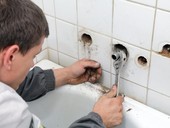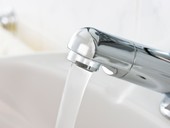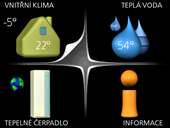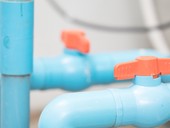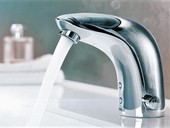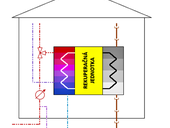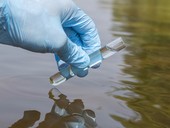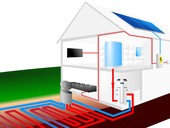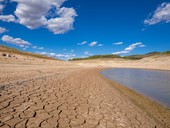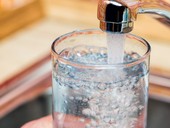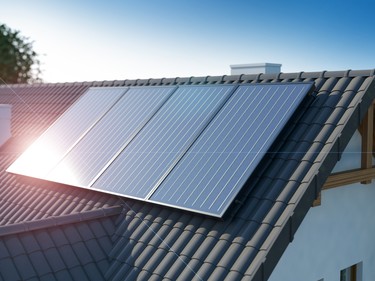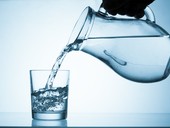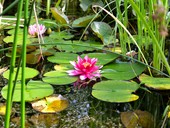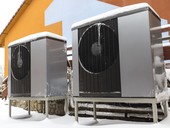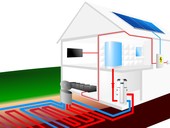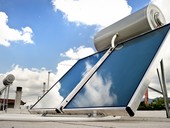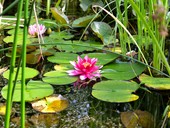Investment and operating costs and the actual life of the internal water supply system are significantly reflected in the actual economy of the building and its operation. The mistakes that are associated with internal water mains impoverish us all unnecessarily, they only generate work for a small group. It is necessary to change the view of the importance of internal water supply, especially when it comes to buildings managed by the state, municipalities or serving the public.
Archiv článků od 2.9.2019 do 13.7.2020
Investment and operating costs and the actual life of the internal water supply system are significantly reflected in the actual economy of the building and its operation. The mistakes that are associated with internal water mains impoverish us all unnecessarily, they only generate work for a small group. It is necessary to change the view of the importance of internal water supply, especially when it comes to buildings managed by the state, municipalities or serving the public.
The subject of the research is a ventilation unit with a heat pump providing vacuum ventilation in a specific family house. The year-round energy balance of the operation was prepared from the obtained parameters. For a total heat loss of 5 kW, the seasonal heating factor SPF of the entire system was evaluated at the level of 2.5.
For pipe renovation using the CIPP method, the installer company should also define the maximum proportional gas volume of any entrained air and/or evolved gas in the wall of the CIPP tube. There is no prescribed method fordetermining the maximum proportional gas volume in the wall of the CIPP. The maximum proportional volume of any entrained air and/or evolved gas in the wall of the CIPP tube was determined by evaluating pictures from a digital optical microscope and X-ray tomography. For comparison, various methods of curing have been researched (steam curing and the UV-curing). The usage of digital optical microscope is more economically and affordable, but not as exact as X-ray tomography. Greater gas volume in the pipe wall occurs in steam-cured pipes and the pores are enclosed in the pipe wall. In the case of UV-cured specimens there are also open pores on the pipe surface.
Saving drinking and hot water without considering the context can jeopardize the hygienic parameters of the water and the function of the internal sewerage system. However, the investigation is necessary, and therefore the author states the risks and defines the limit beyond which the investigation is inappropriate without other measures.
Underground and above-ground hydrants have a special position within shut-off valves. They are used for various functions in water networks. Their importance in relation to the applicable standards is also reflected in the fact that they have a higher minimum service life in the number of cycles (1000 cycles) than conventional shut-off valves with manual control. At present, the usual criterion for their purchase is the price, the criteria of construction and useful elements in terms of long-term durability and reliability are not taken into account.
One of the current strategies of the joint stock company Brněnské vodárny is the introduction of remote reading technology, which will fully incorporate cooperation with the city. A common approach to the development of the remote reading system is thus fulfilling a vision called Smart City. In this case, with the aim of covering all supply points in the city of Brno by remote reading of water consumption.
We present results of monitoring the occurrence of mixtures of unoriginal substances in groundwater of the Czech Republic. The results show that the introduction of new technologies for the removal of organic micro-pollutants will be necessary especially in the case of waterworks, where groundwater is a source for drinking water treatment.
Methods and instrumentation for injection quality measurement in heat pump boreholes including measurement of groundwater flow through the borehole outside the partly grouted borehole exchanger tubes have been developed in the Czech Republic. A Semtex charge has been developed for the rock massive repair, which reliably disconnects the ground exchanger tubes without serious impacts on the surrounding rock environment and buildings. The resulting hole can then be used for re-grouting, thus preventing undesirable vertical water flow through the borehole.
The aim of the paper is to present the possibilities of using water supply systems to mitigate the impacts of drought on the population. The paper includes a description of several specific cases in selected regions. The regions are Hradec Králové and Náchod areas, Central Bohemian Region and the closely related water supply to the city of Prague.
The risk assessment of water systems is implemented and carried out in more than ten European and a number of non-European countries. The main expected benefits of risk assessment are improving water quality, reducing the number and consequence of accidents, improving water resources protection, reducing acute diseases in the customer population, improving operational monitoring, better understanding of the entire supply system, reducing costs of remedies, operator and more. The disadvantage of carrying out a risk analysis for operators is, above all, a higher administrative burden and the costs of introducing a risk assessment.
The article acquaints readers with the situation on the European and world market for hybrid photovoltaic-thermal (FVT) collectors. This year, FVT collectors first appeared in the world statistics of solar thermal systems as a significant part of the market. However, their installations are still rare in the Czech Republic.
The paper describes the possibilities of applying groundwater flow numerical model and the model of pollution spreading (transport model) in the process of determination or updating of water protection resources zones, resp. in determining the area of resources for human needs.
The model calculation of groundwater flow (based on a sufficient amount of input data) helps to set protection zones, address their area to the most necessary shapes and eliminate their under/oversizing.
By the hydraulic model are calculated groundwater levels and streamlines in the area of interest including groundwater flow travel times from the infiltration zones to the pumping wells. The detailed groundwater balance and the origin of the groundwater pumped in the wells are other useful model results.
The application of transport models contributes to the determination of the vulnerability of water resources in terms of potential risk pollution spread from the critical areas in the hydrogeological basin. The pollution spread is significantly influenced by the groundwater flow direction and intensity. The contamination transport is also influenced by the other processes (dilution, sorption, chemical reactions, preferential flow) and the transport is different from the average groundwater flow velocity. The results of the transport models enable the design of the effective groundwater quality monitoring system.
The article describes the procedure and results of the hydraulic and transport model realized using the MODFLOW-USG program for area of the Nebanice water resources in the Cheb Basin.
The paper deals with the influence of climatic conditions on the efficiency of operation of air-water and ground-water heat pumps in domestic hot water preparation. Simulation analysis was performed for domestic hot water abstraction by a family of four in different climatic locations in Europe. It has been found that the efficiency of both types of heat pumps does not differ substantially. The surprising conclusion is that the considered ground-water heat pumps are slightly more efficient in hotter regions for hot water preparation, while air-water heat pumps are slightly more efficient in climatically mild and colder locations.
The paper presents an analysis of PV system usage without a battery storage to cover electricity consumption for single family house with 4 persons and heat pump as a heat source for heating and preparation of domestic hot water. The result of the analysis shows the importance of using a sufficiently short time step of load profiles for correct assessment of solar fraction of PV system. Simplifying chart for fast estimation of solar fraction in a given application (heat pump, user energy) has been developed.
The paper deals with simulation analysis of solar system for domestic hot water preparation for apartment building. The analysis shows the influence of climatic conditions on solar system gains. The aim is to verify whether the level of solar gains can be guaranteed in the Czech Republic's climatic conditions. In discussions over the efforts to guarantee the benefits of a designed and installed solar system, another question arises as to how the total solar radiation changes year-on-year and whether its annual fluctuations can be simply passed on to the solar system's profit.
More than 25% of agricultural land area in the Czech Republic (1.065 million ha) has been drained, thus a significant proportion of stream flow comes from tile drainage outlets, especially during hydrological events (RRE) such as snowmelt, summer storms and long periods of rain. Besides positive effects of soil aeration and productive function of agricultural lands, intensive land drainage has some negative effects on the environment such as shortening water residence time in the drained area, lowering the ground water table, and polluting shallow subsurface water with nitrates and pesticides.
This paper was focused to evaluate the loads of nutrients (nitrates, phosphorus) and pesticides from drainage systems during common low discharges and during RREs as a potential dangerous source of pollution of water sources. Second objective was to introduce some simple measure for mitigate the risk of subsurface sources of pollution.
In the case of N-NO3, the total load varied from 0.4 to 61 kg/ha/year, in the case of P-PO4 the load varied from 0.64 to 132 g/ha/year and in the case of total phosphorus the load estimation was from 1.2 to 304 g/ha/year.
R-R events had on average a 25% share of the total year runoff, 24% share of the N-NO3 load (from 2% to 86%), 42% share of the P-PO4 load (from 2 to 98%) and in the case of total P 40% (from 1 to 97%). This big load differences were caused mainly by the varying hydrologic connectivity of the particular subcatchments and also by the different number of events in different monitoring seasons.
When dealing with intensively-used drained agricultural lands with common drainage specific runoff (0.02–0.05 l/s/ha), the typical R-R event share was 50% of the total annual load of both forms of phosphorus monitored. While for sufficiently exact N-NO3 load estimation continuous measurement of drainage discharges and regular grab water sampling are important, the phosphorus load estimations were strongly underestimated even with the use of continuous discharge measurements. To obtain information about the dynamics of nutrient loads during the season and particular events, the monitoring must be improved by continuous sampling during R-R events.
Results of pesticides monitoring proved that drainage systems represent a significant source for pesticides leaching from agricultural land. Leaching of pesticide metabolites was mainly associated with baseflow and shallow interflow. It is often old and long – time burden with concentration varying 2 000 – 5 000 ng/l. Water from causal precipitation usually diluted their concentrations. The prerequisite for the leaching of parental compounds was a rainfall-runoff event occurring shortly after spraying, and the presence of event water in the runoff. When such situations happened consequently, pesticides concentrations in drainage water could be extremely high up to 200 000 ng/l) and the pesticide load reached several grams in a few hours.
The above mentioned results are useful for establishing effective monitoring systems for watershed management authorities and policy makers and also for realistic assessment of pollutant fluxes within the tile drained agricultural catchments. The results also proved the need to design measures in the areas most vulnerable by subsurface (drainage) pollution. As protective measures, grassing of recharges zones, biofilters and constructed wetlands were introduced.
zpět na aktuální články
